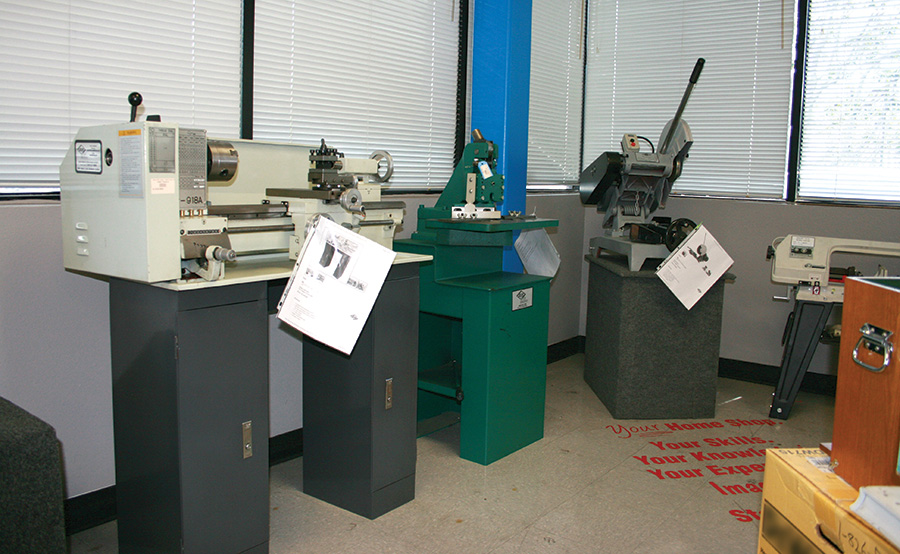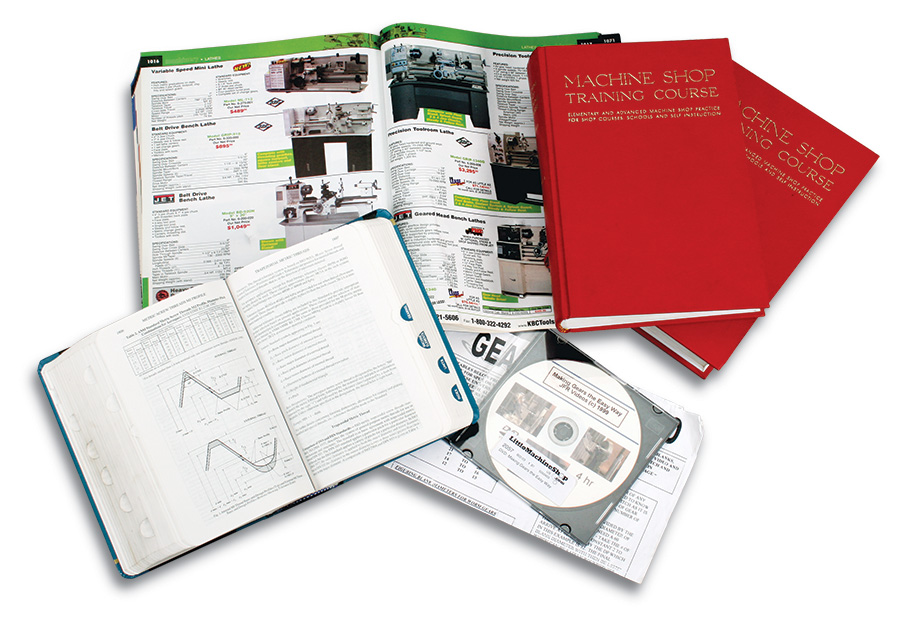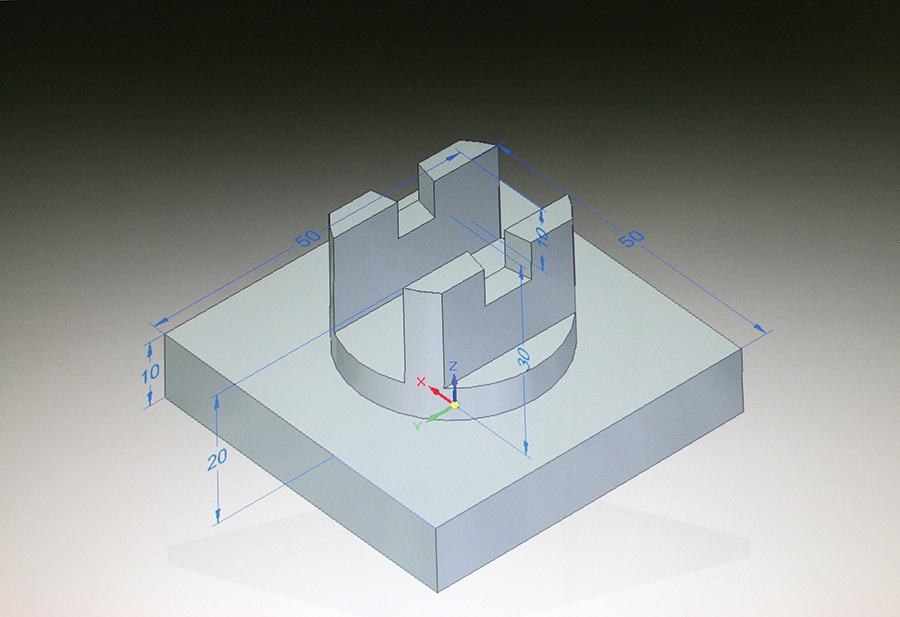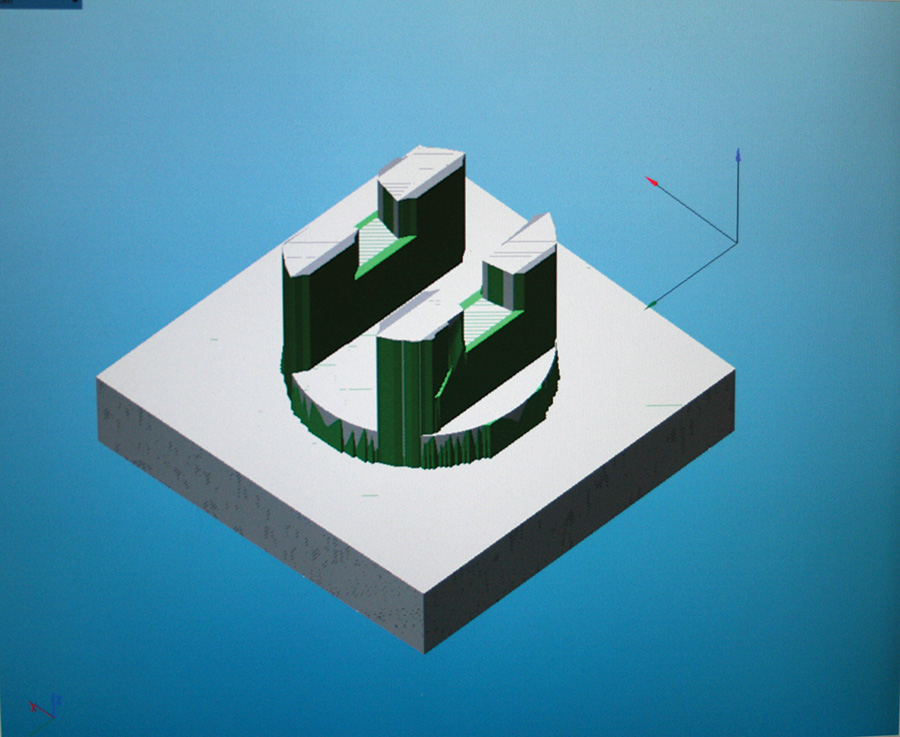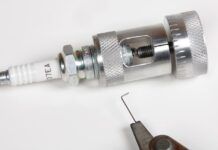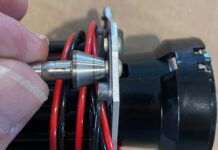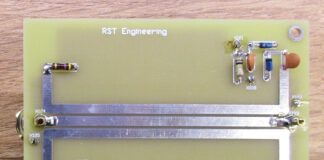Last month we discussed basic types of machines for the home shop. You’ve made up your mind for a benchtop or freestanding machine and it’s time to start shopping local dealers, auction sites, and on-line stores. Deciding where to buy can sometimes be as complicated as what to buy, especially when you add the plethora of machines on eBay or Craigslist.
Shop ’til U Drop
Window shopping on the web, especially eBay, is awesome for no other reason than the exposure to a huge variety of machines. Granted most of them will be too big, too expensive, or the wrong type (such as a turret lathe) for the home shop, but the education/curiosity value is immeasurable. Often you can glean details about a particular make and model from an auction listing that you could never find elsewhere. This is particularly true for older machines or brands that are no longer around. A good example is Atlas, which also made machines under the Craftsman and Dunlap brands. They ruled the home-shop heyday of the ’40s and ’50s. Although tons of these small machines were made, few today are in pristine condition and fewer still come up for sale. The ones that do garner top dollar. A small Atlas benchtop lathe in good shape might sell for $700 and up. Larger models with a stand might sell for $1500 or more. The price for a used industrial-quality tool room lathe—as opposed to home-shop quality—could easily be three to five times that, even for a beater! A used Hardinge or LeBlond lathe in good shape will be a much better machine than most new ones from China. An old beater machine, regardless of regal heritage, isn’t.
New or used, do not buy a machine sight unseen. If it is a new machine, more than likely it is being sold by a distributor or dealer. Machinery dealers tend to be clustered around major metropolitan areas. Direct distributors like KBC, Enco, and Grizzly don’t sell through dealers. Instead they have regional showrooms and much of their business is direct ship via on-line sales or toll-free telephone. Buying direct makes it tough to compare the equipment, but not impossible. All of the companies mentioned above are huge national brands with toll-free customer service numbers. You can and should ask if there are customers in your area. Unless you’re off the grid or on a remote island somewhere, more than likely someone in your area has purchased a machine. At the least you should ask about their purchase experience and if they would buy again from the same company. If not, it’s worth considering other options.
Most of the used machines on eBay are sold private party and often require local pickup. That gives you a chance to look first and ask questions. For example, a few years ago, I was shopping for a small lathe. I found a gem of an Atlas bench lathe for sale locally. I contacted the owner and arranged to look at the machine before bidding. What he had was two lathes, one really nice one and one not so nice. He wouldn’t sell the nice one and wanted too much for the other one, so I never bid. Another time I found what looked like a nice little surface grinder (I always wanted one of those). The seller was a machine dealer just a few miles away. It turned out the description was bogus and the machine was in disrepair. As always: caveat emptor.
Don’t worry too much about making the perfect, educated decision when buying your first machine tool. If buying new, stick with an established brand and you’ll be OK. As I mentioned last month, if you are using the DIY approach, the mini-size benchtop machines are a good choice. The experiences you gain on a small machine more or less transfer directly to larger machines. By the time you’ve mastered the capabilities of a benchtop machine, you’ll intuitively know if upgrading to a larger and more capable machine is right for you.
CNC
While unimaginable just a few years ago, it is now possible to park a new CNC machine in your garage for less than the cost of a used car. Syil America offers an up-spec CNC version of the mini mill as well as a small CNC lathe. Little Machine Shop sells a nicely designed CNC benchtop mill. Tormach is a name that should be familiar to readers. In addition to consistent advertising in KITPLANES®, they’ve displayed at AirVenture in the past. The Tormach PCNC (Personal CNC) mills are arguably the most capable of the small CNC mills that would be practical for a garage or home shop setting. There are new brands coming on the market all the time, so Google “CNC mill + benchtop” and browse for new or additional suppliers to the ones mentioned above.
All these machines can be fitted with optional flood cooling, can be programmed to 0.0005 inch and, with some practice and attention to good tool-path habits, complex parts within 0.001–0.002 inch accuracy can easily be coaxed out of them.
Except for the Tormach, none of them come with tool changing capability —which limits their usefulness for production work—but that should be no big deal since home shop machining is about one-offs and Experimental work.
Catalogs, books, DVDs, and reference guides all play a part in the education of the home shop machinist.
CNC is like magic when it comes to making parts. Any traditional machinist that hasn’t looked at CNC is missing out. It is actually quite easy for a skilled machinist to learn how to program in CNC language (called G-code). You do not have to be computer savvy. A little perspective is in order. In the most basic sense, all a CNC machine does is turn the “hand wheels” that move the table instead of a human. You, the machine operator, still must figure out how to clamp the part down, what tools to put in, where to start cutting, and in what direction.
I was a relative latecomer to CNC and had to learn it as a job necessity. The first thing I did was read a book called Easy CNC by David Benson and published by Square 1 Electronics. It helped tremendously, and I am still using one of the freeware programs recommended in the book. Most CNC machines come bundled with software to get you started. Typically what you get is some sort of modeling software (the CAD in CAD/CAM) and some sort of G-code generator (the CAM in CAD/CAM). The more sophisticated CAM packages will run solid-model simulations to demonstrate the tool path the software created based on your defined parameters, such as tool profile, diameter and length, as well as your direction of cut and so forth. It might sound complicated, but it’s really not. The really fun part is impressing your friends with the cool stuff on the screen and then turning it into a real part!
A CAM simulation program representing the cutter and the work piece to be milled by CNC program commands.
Where to Start
If you have no machining experience at all, I think most machinists would advise you to buy a conventional machine instead of CNC. That was my opinion also, until I talked to Andrew Grevstad of Tormach.
“CNC, and especially small CNC mills like our PCNC mills are a little more approachable than you make it sound here for the machining novice,” said Grevstad. “Obviously, it’s unrealistic to expect you’ll open up the crate and start making great parts by the end of the first day, but I’ve been consistently impressed and surprised by how quickly Tormach customers with no machining experience—CNC or otherwise—advance in their metalworking skills.
“Where I think machining novices struggle the most is not so much with the CNC part of machining, but things like part setup, dial work, work holding, and gauging. These are the skills that take time and experience to really master, and they have nothing to do with whether or not the mill is computer controlled. That’s where having a mentor or instructor to show you how can really be an asset,” added Grevstad.
So, if you’re willing to read everything you can get your hands on, take shop courses and CNC classes (many trade schools and community colleges have CNC courses, and Tormach offers hands-on instruction at their headquarters in Wisconsin), it’s possible to start making real parts in a couple months, if not sooner. Provided you keep at it, in a couple years, you’ll be doing things as good as—or beyond—what many experienced machinists do with manual machines.
Sequence of computer simulation showing the CAM program’s tool path as the cutter works its way through the designed model to the finished part. The same part could be made on a manual milling machine and a lathe or completely on a mill equipped with a rotary table. The difference is time and precision: CNC wins easily in both cases.
Learning the Ropes
As I just mentioned, your job as the machine operator is to figure out how to fixture the material, what cutters to use, how to set them, where to start cutting, and in what direction. Those are the basic skills that come into play on every part you make. But they are just that: the basics.
Books, magazines, videos, local community college courses, private coaching, trade show demos, catalogs, and trial-and-error are among the variety of ways you can build your knowledge base. In many ways, machine shop practice is like flying: There’s no single source for all the information, and you never stop learning.
A good source for educational material is the book and video section on the Little Machine Shop web site. As of this writing (summer 2013) I counted no less than 35 book titles and 47 video titles. Most of the titles are geared for beginners, and the ones that aren’t, such as Machinery’s Handbook or Metalworking Sink or Swim by Tom Lipton, are invaluable in their own right. Machinery’s Handbook, which has been in print since 1914 and is updated regularly (currently the 29th edition), is over 2600 pages of mathematics, mechanics, materials, measuring, tools, manufacturing, threading, gears, machine design and more. Lipton’s Metalworking Sink or Swim, on the other hand, is more of a muse on survival skills for the modern machine shop. Both are published by Industrial Press.
How-to videos complement books greatly, but not the other way around. I think you absorb more from reading than watching a video, but the videos often provide something that no book can: those “how it’s supposed to look” validation moments. If you have no context, you can read all day about “climb milling” and have a hard time getting it. But seeing it explained on video can be like flipping on the light switch.
The Internet, especially YouTube, has some highly entertaining and educational machine shop videos. Pick a subject and there’s bound to be a variety of how-to videos. My personal favorite search is “CNC Machine Crash” because sometimes it’s just as enlightening to see how not to do it.
Trial and error at the machine will be a major part of your learning experience. At the start it will be mostly error. As you begin to make simple parts you will gain a feel for how things should go. Sometimes the only way to find out what you and your machine can do is to jump in and start making parts.

